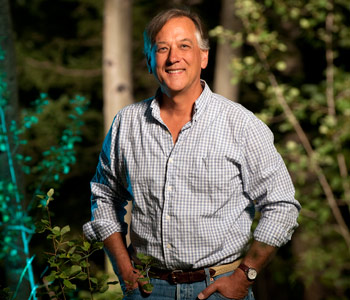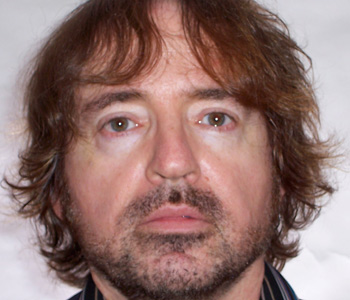Pamela Robertson Wojcik
Fantasies of Neglect: Imagining the Urban Child in American Film and Fiction
Rutgers University Press
256 pages, 6 x 9 inches
978-0-8135-6448-7
Fantasies of Neglect is at once a work of cultural criticism and an account of changing ideas of childhood, parenting, and the urban from the 1930s to the present. It examines representations of the urban child in a wide range of films and fiction, including films starring Shirley Temple and the Dead End Kids, The Champ and its 1970s’ remake, Mary Poppins, The Cool World, Kramer vs. Kramer, and The Hunger Games; as well as novels like Ann Petrie’s The Street and Joanthan Safran Foer’s Extremely Loud and Incredibly Close; and children’s books Harriet the Spy, Eloise and The Planet of Junior Brown.
I focus especially on children’s mobility and autonomy in the city as they are framed by fantasies of neglect. The fantasy of neglect consists of two conjoined fantasies. There is, on the one hand, the fantasy that the urban child is a figure of neglect and, on the other, the fantasy for the child of being neglected, or let alone. On the one hand, the child appears to be unmoored, unsupervised, and unprotected. On the other hand, the notion of neglect points to the positive thrill and possible risk of the child’s freedom, independence and movement. These conjoined fantasies bring together a host of ideas about the urban, children, space, parenting, neglect, poverty, reform, and more; and they shift over time.
Taking up Miriam Hansen’s invitation to investigate cinema history in order to discover “different futures whose potentialities may be buried in the past” (Cinema and Experience xvii), Fantasies of Neglect examines earlier representations of and discourses around urban children both to chart how our ideas about the urban child have changed and also how we might re-imagine childhood. From our current context of helicopter parenting and stranger danger, films and fiction of the early twentieth century provide a now-strange, because historically distant, vantage on modernity, urbanism, and childhood. Insofar as kids’ real life mobility contracts, and children disappear from city streets, representations of the urban child serve not only as a nostalgic reminder of the past, but also as a prompt for the future, to rediscover and revive the child in urban space. These representations of the urban child’s social space are not merely reflections of childhood or nostalgic images we return to as adults, but crucially de-familiarize and denaturalize our ideas about childhood and urban encounters.
Until this book, I never wrote about or taught anything related to childhood. I came to this project initially through my interest in film and urbanism. As I wrote and taught about the apartment plot, I noticed that the filmic imagination in that genre tended to represent the city as almost exclusively an adult space – showing mainly singles or older married couples, but not families. This was especially striking because my work was looking at domestic urbanism – life in apartments, not nightclubs or other adult-oriented public spaces. At the same time, much of the discourse on the city that I was reading – aside from Jane Jacobs’ tremendous The Death and Life of Great American Cities – tended to either not discuss children at all, or talk about why the city was unfit for children and families.
I probably would not have noticed this except that I was a mom raising kids in the city, writing about the city, and writing in part from my memory of watching urban films and TV shows that made me, a suburban child, want to be a city person. But as I shared these texts with my kids – things like Harriet the Spy along with more contemporary texts, like Hugo – I realized that they ran counter both to the negative discourse on children and cities that had dominated 20th century urban discourse, and to the reality of my kids’ lives in the city today. While reformers, urban planners, and social workers portray the urban child as poor, unhappy, and deprived, books and films about children show city kids expressing joy, resourcefulness, and the ability to colonize urban space for their own purposes, have encounters with strangers, take risks, and have fun without adults. However, contemporary kids exist in the world of what has come to be called helicopter parenting and what geographers refer to as the “islanding” of children, do not walk streets alone, and have lost their mobility and freedom.
So, I became interested in the relationship between children and the urban as an historical set of questions both about the ways in which kids have been represented and about how ideologies of childhood and ideologies of the urban have changed. This set of questions led me to read the work of children’s geographers, such as Colin Ward, John Gillis, Owain Jones, Kevin Lynch, Hugh Matthews and Gill Valentine; sociologists such as Paul Cressey and others involved with the Payne Fund Studies; theorists of childhood such as Robin Bernstein, Leo Bersani, and Kathryn Bond Stockton; literary critics who write about representations of children, including Marah Gubar and Claudia Nelson; government documents related to neglect and the decennial White House Conferences on Childhood. Within film theory, Miriam Hansen’s work was especially important. Her notion of vernacular modernism became a framework for thinking about how the 1930s child-focused films reflected upon modernity and especially anxieties over increased urbanization, and the growing squalor of industrialized cities, including overpopulation, tenements and slums.
The chapter with the most sidewalk appeal is probably Chapter Two, “Shirley Temple as Streetwalker.” I argue that film starring Shirley Temple and Jane Withers, the Little Orphan Annie Comic strip and the movie The Wizard of Oz, all in some way parody the figure of the fallen woman. In these texts, the girl is unmoored from home (lost, homeless, orphaned), then wanders the streets where she meets a man who, in effect, picks her up. In these texts, the girl’s worth is often monetized and she is seen as potentially at risk. Rather than show the girls as victims, however, these texts emphasize the girl’s mobility and freedom and ascribe to her significant agency to transform and improve not only her situation, but also that of the men. Ultimately, these texts navigate uncertainties about child homelessness, marriage and the status of family in the Depression by imagining the creation of contingent, sometimes ethnically mixed, and even queer adoptive families.
The final chapter takes up two contemporary texts, The Hunger Games and Extremely Loud and Incredibly Close in both their film and novel versions, as extensions of helicopter parenting and the traumatic imagination. The traumatic imagination – by which I mean a near fetishistic interest in dystopic landscapes, zombie apocalypses, failed government, war, and environmental disasters – seems, on the one hand, an extension of the many everyday anxieties that shape contemporary parenting, and, on the other, a way to work through those anxieties and enable the child to imaginatively achieve mastery.
The Dead End Kids have a streetside tea party in Angels Wash their Faces.

I hope that the book leads people to question why we do not allow our kids to have some freedom and mobility and to reconsider the “common sense” assumption that they are in danger. I also want people to discover films and books they might not otherwise know. For me, one of the joys of writing the book was discovering the remarkable children’s book The Planet of Junior Brown, watching films starring the Dead End Kids and Jane Wither, seeing Bush Mama, Cool World, and The Little Fugitive with fresh eyes, and revisiting favorites such as Shirley Temple films, Harriet the Spy, and The Champ.




We don't put paywalls. We don't distract you with ads. We don't sell your data.
Please help to keep this running!